|
Listen to this post
|
Tuesday, September 20, 2022. Again, I got up at 6 a.m. and did another photo from the bow. After breakfast, Kin identified the duck we saw at the beaver pond [Friday, September 16, 2022] as a common golden eye duck. It is great to have individuals (Kin especially) who know the local fauna and flora. Since we are without Internet access most of the voyage, it really helps to have local experts. Yes, I am serving as the resident entomologist.
We are still traveling through British Columbia (Canada) and can not stop on shore. I am enjoying the scenery and wildlife (mostly birds with some mammals). It would be great to stop and explore parts of many inlets we passed.
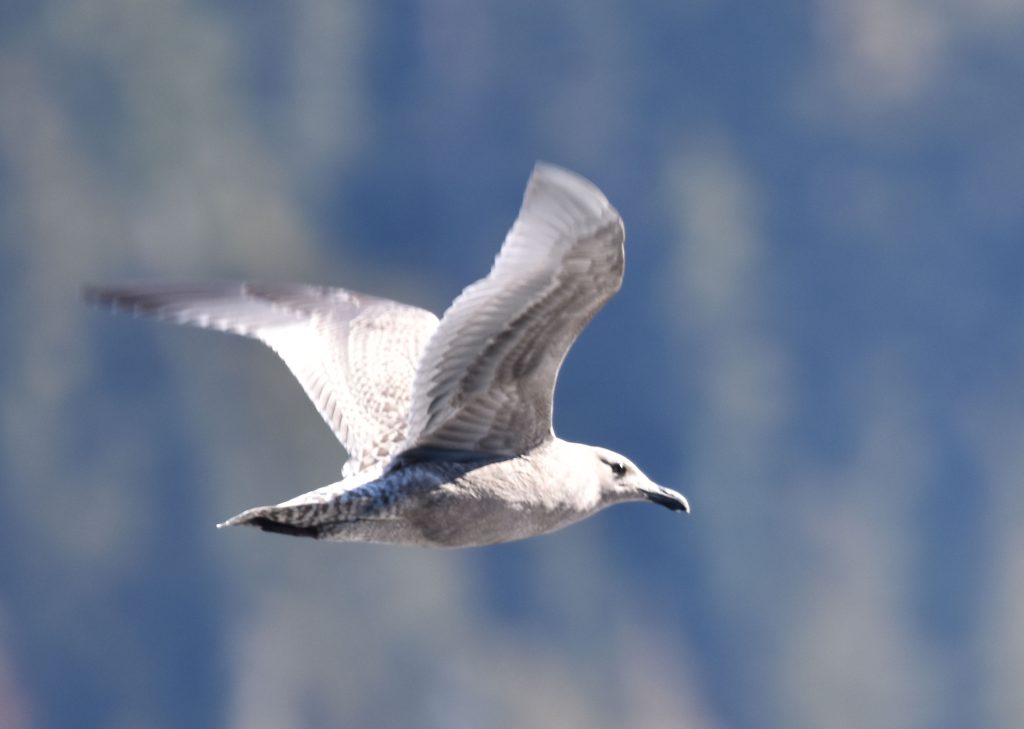
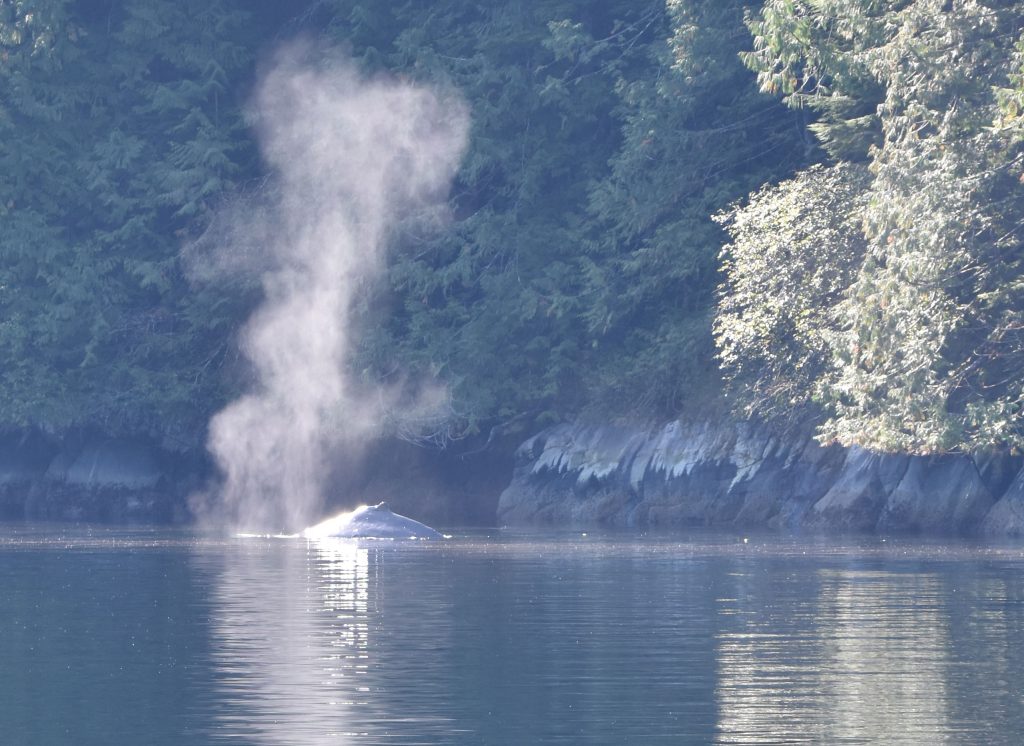
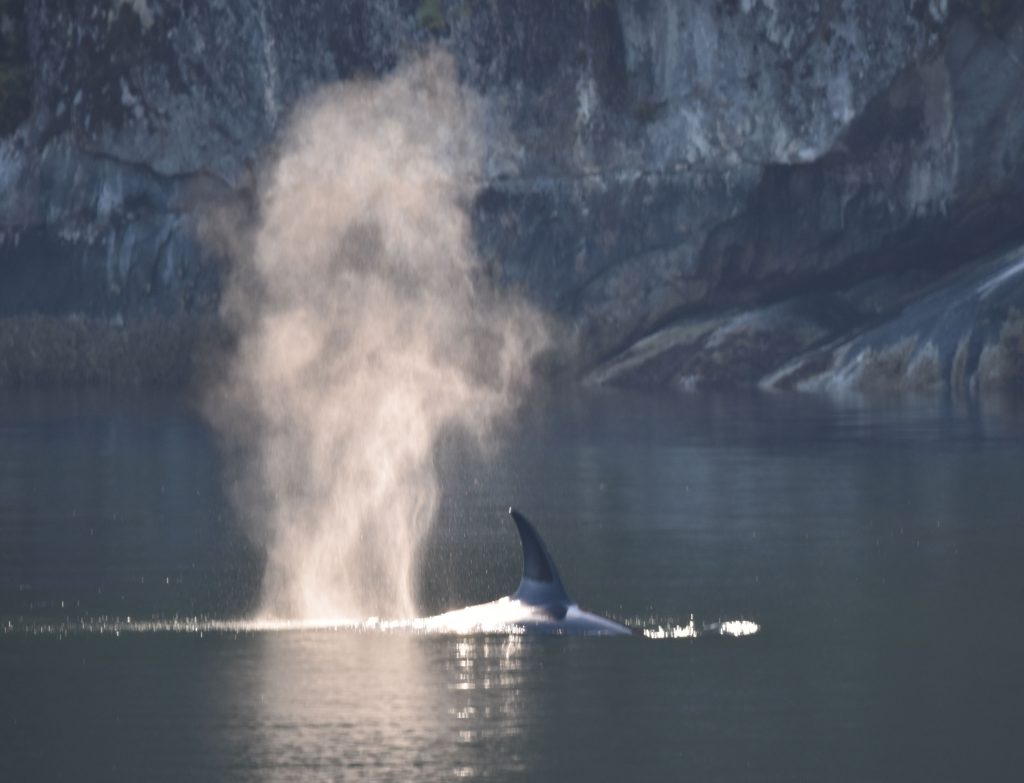
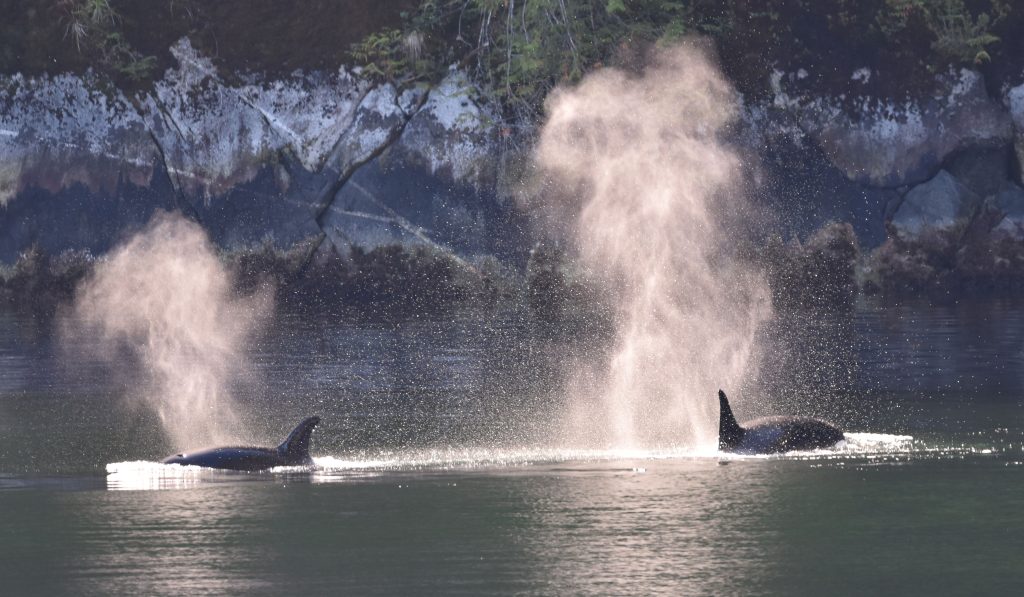
We went past Butedale Cannery (which is abandoned) and nearby Butedale Falls. We looked for the spirit bear (it is a white bear – actually, a black bear, but with white coloration; it is not an albino). We did not see that beast.
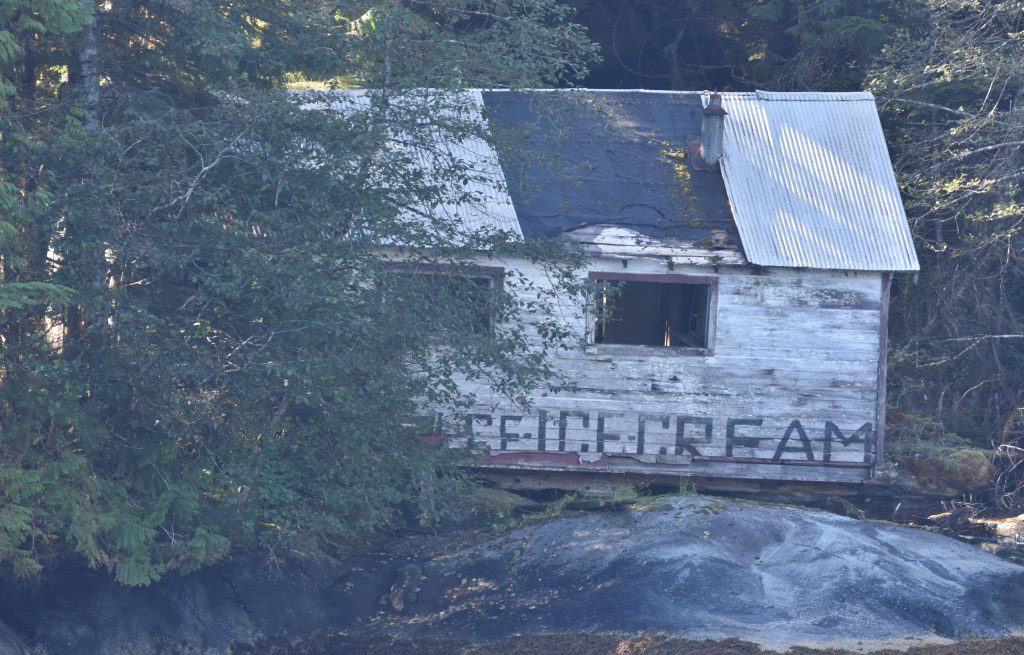
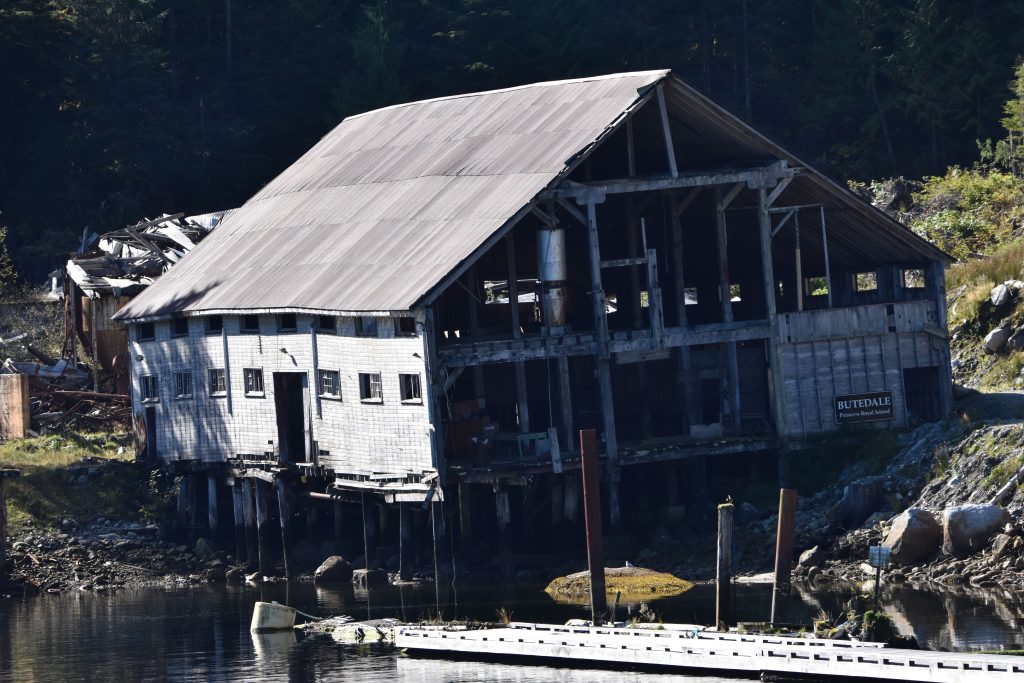
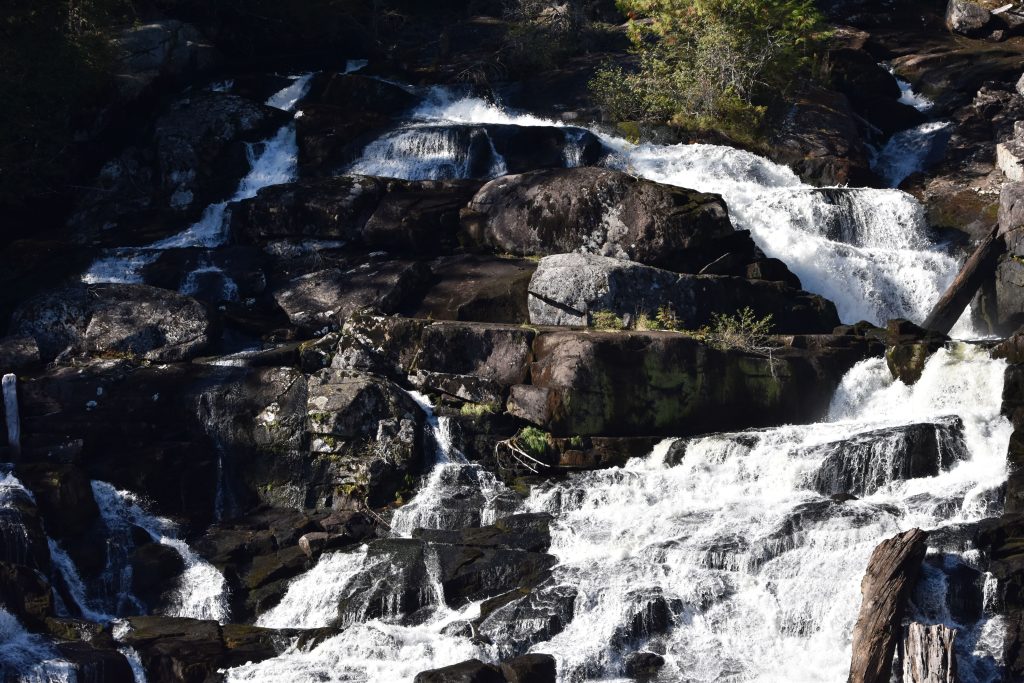
Butedale Falls is the name for a series of cascades. The total height of the falls is 315 feet. The is located on Princess Royal Island, British Columbia. The town of Butedale was founded in 1918 as a fishing, mining, and logging camp. The cannery ceased operation in the 1950s. At its height, the summer population of Butedale was roughly 400 people. The Post Office closed March 4, 1974.
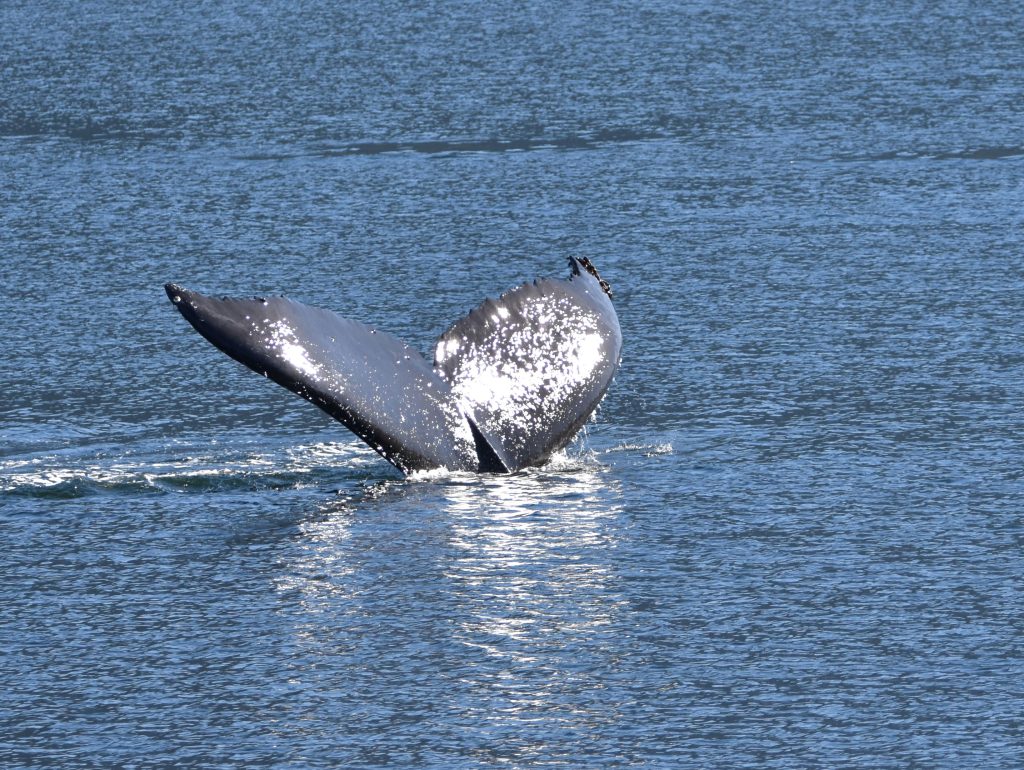
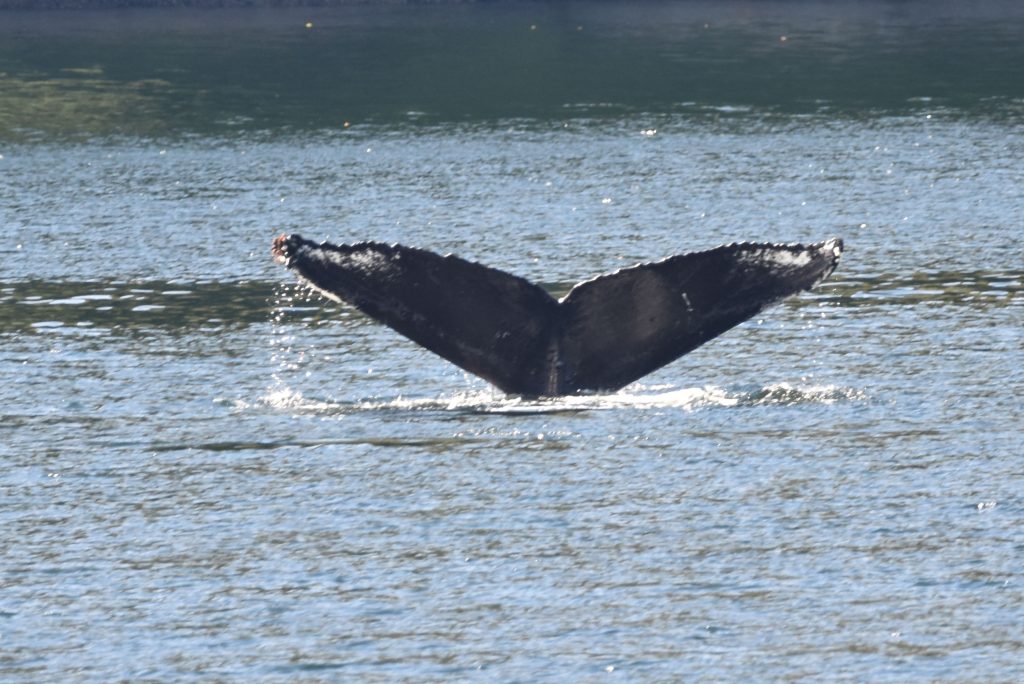
This is what the area looked like that day.
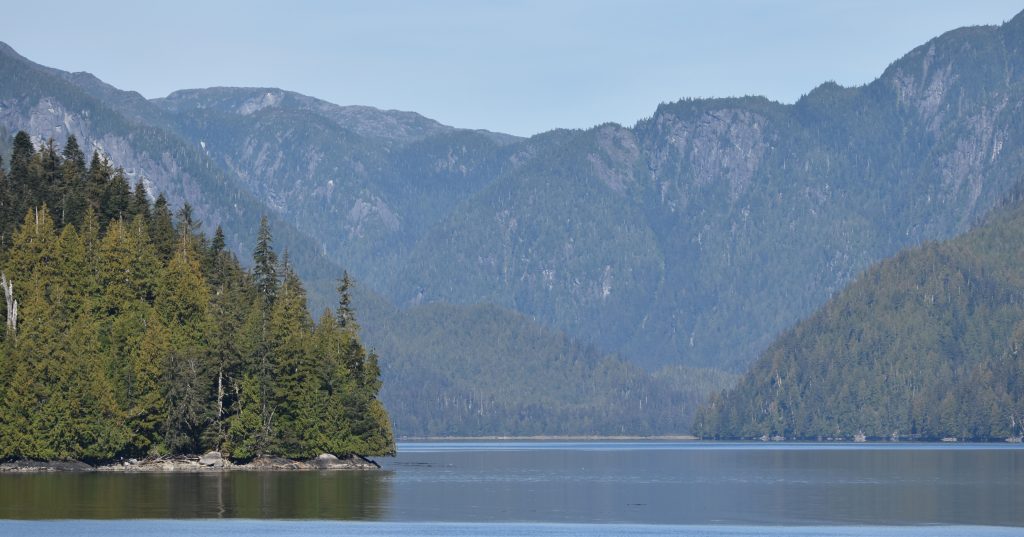
We have been assembling a list of plants and animals we observed during our voyage from Juneau. Here is a photo of what we (guests and crew) recorded.
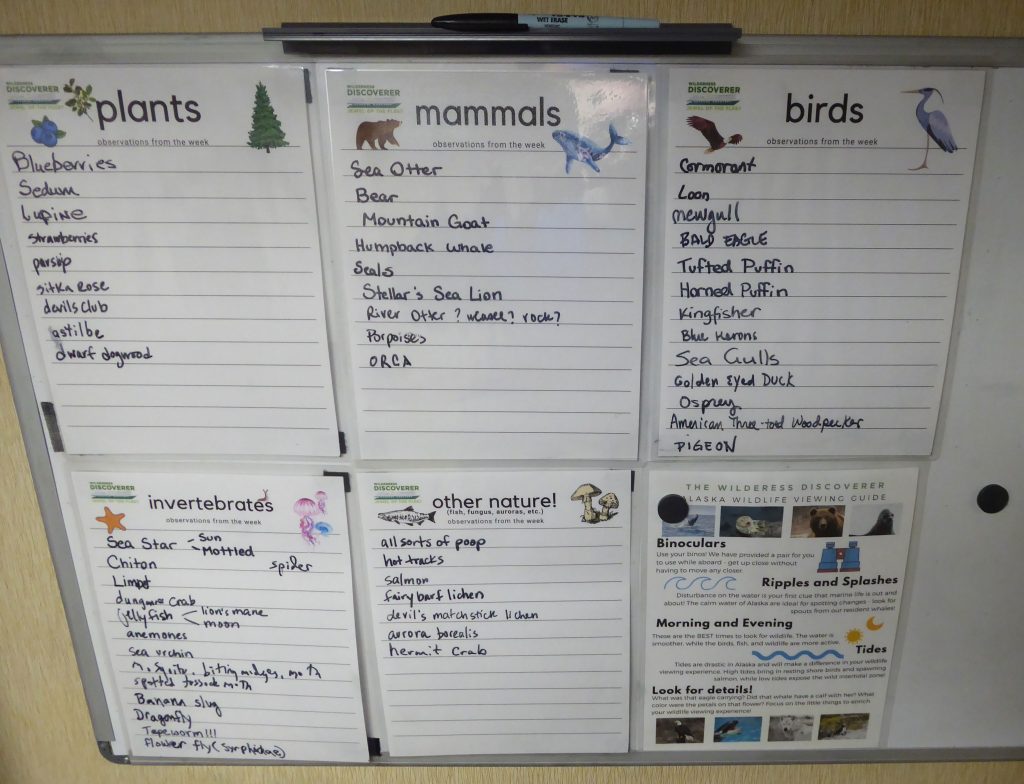
Sam (one of our guides) did a presentation on the Alaskan Gold Rushes in the afternoon. He began reciting a poem by Robert Service on The Cremation of Sam McGee.He did this entirely from memory.
15,000 years ago there were people in Alaska. 4,000 years ago, there was trade between Alaska and Siberia. In 1750, the Bering Strait was rediscovered (this time by whites). In 1728, Captain Cook sailed past. In 1784 the Russians were in Kodiak. In 1867 Seward’s Folly happened (the purchase of Alaska by the United States). This purchase was for $0.02 per acre. In 1873 gold was found in Sitka (by Stewart and Heley). Roughly 60,000 prospectors came to Alaska. In 1896 was the Yukon gold rush.
Sam showed indigenous people map of Alaska and nearby areas. Presently, there are 72 languages spoken in Alaska (most are indigenous). Sitka was first capital city. Had a wall to separate Tlingit and Russians prior to Americans taking over. in 1906, the state capital was moved to Juneau.
Although we are more sedentary during this day of passage, we are still learning a lot and observing many interesting sights. Yes, I like the whales. I will try to post more about our cruise for the day September 21 soon.


